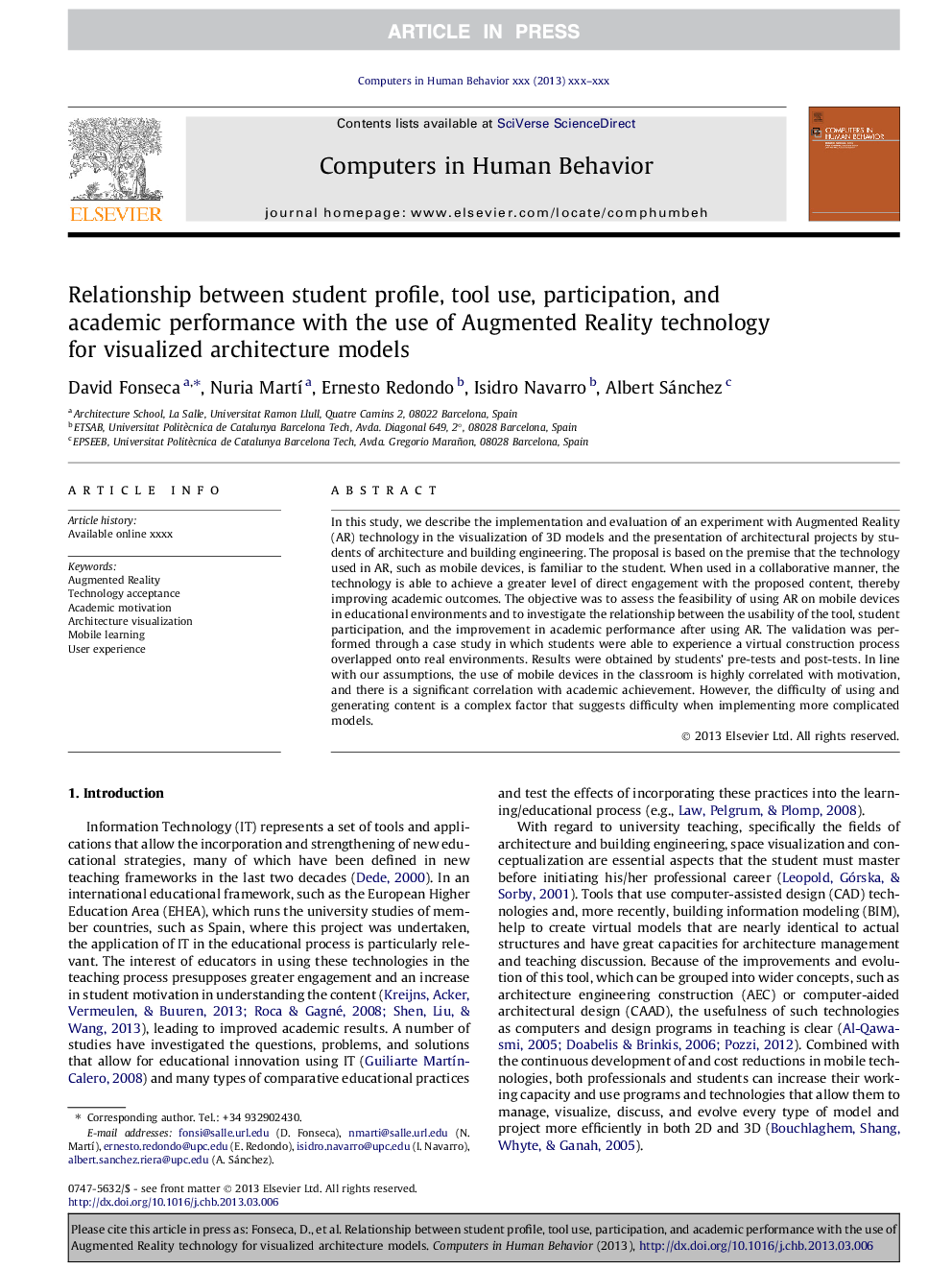| Article ID | Journal | Published Year | Pages | File Type |
|---|---|---|---|---|
| 6839535 | Computers in Human Behavior | 2014 | 12 Pages |
Abstract
In this study, we describe the implementation and evaluation of an experiment with Augmented Reality (AR) technology in the visualization of 3D models and the presentation of architectural projects by students of architecture and building engineering. The proposal is based on the premise that the technology used in AR, such as mobile devices, is familiar to the student. When used in a collaborative manner, the technology is able to achieve a greater level of direct engagement with the proposed content, thereby improving academic outcomes. The objective was to assess the feasibility of using AR on mobile devices in educational environments and to investigate the relationship between the usability of the tool, student participation, and the improvement in academic performance after using AR. The validation was performed through a case study in which students were able to experience a virtual construction process overlapped onto real environments. Results were obtained by students' pre-tests and post-tests. In line with our assumptions, the use of mobile devices in the classroom is highly correlated with motivation, and there is a significant correlation with academic achievement. However, the difficulty of using and generating content is a complex factor that suggests difficulty when implementing more complicated models.
Related Topics
Physical Sciences and Engineering
Computer Science
Computer Science Applications
Authors
David Fonseca, Nuria MartÃ, Ernesto Redondo, Isidro Navarro, Albert Sánchez,
